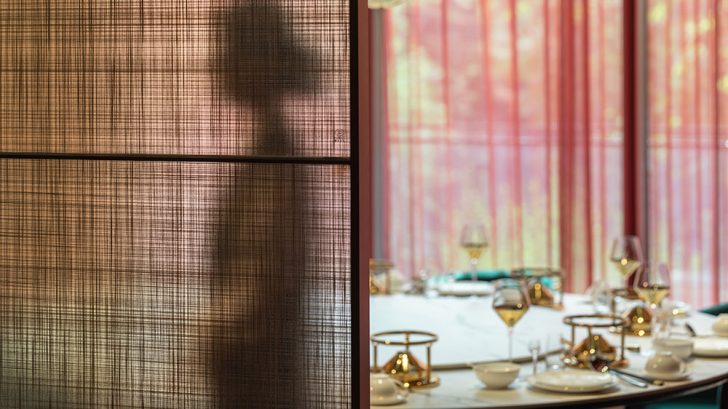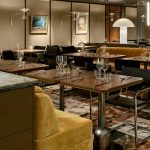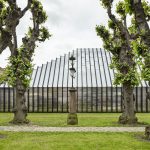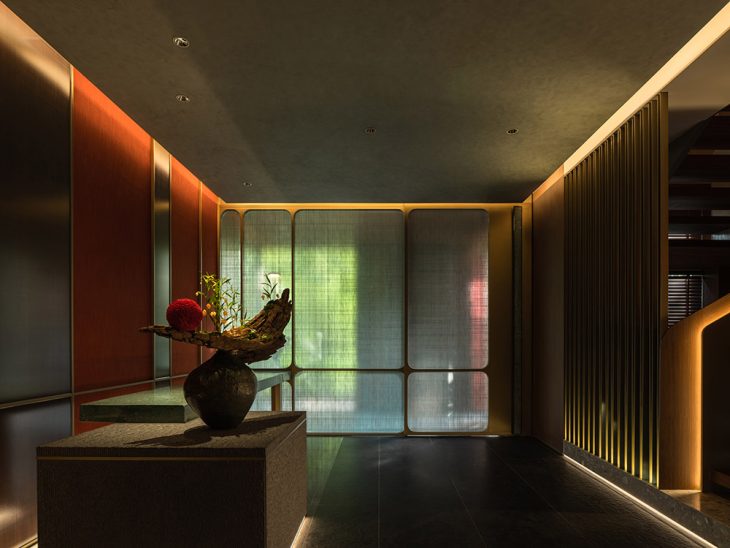
HONG Designworks have recently completed their latest project in Xi’an, China – Heyue Hui Pavilion. The designer starts with color and structure to communicate the assurance and richness of Tang Dynasty mentality, using the vast history as a backdrop. The whole design reinterprets the elegance and humility of the old capital in the present day rather than floating on historical looks and features. The modern neo-deco style enhances and exceeds heritage. Discover more after the jump.
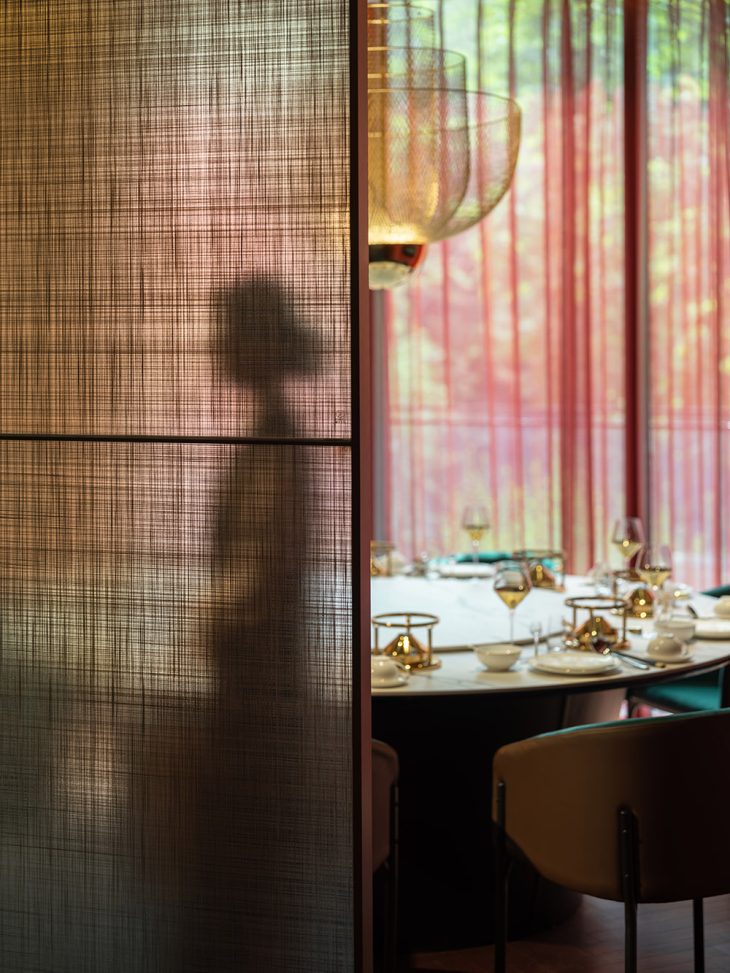
From the architects: In Heyue Hui Pavilion, Designer Dang Ming takes the long history as the background, and starts from color and structure, to express the confidence and richness of Tang Dynasty spirit. The whole design does not float on historical appearances and elements, but reinterprets the luxury and modesty of the ancient capital in the modern era. The contemporary neo-deco style refines tradition and transcends it. The space combines nobility, simplicity, elegance and luxury, creating a harmonious and unique beauty between opposing colors, materials and styles.
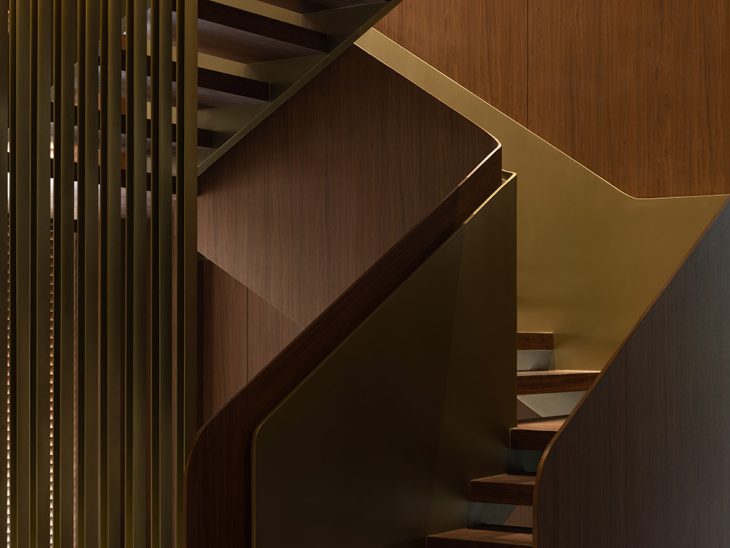
Heyue Hui Pavilion is located in the southeastern of Xi’an, where the famous Qujiang Royal Garden of the Tang Dynasty is. Designer took the classical, warm, and radiant imagery of the dynasty constructed a garden hall to restore the prosperity and luxury.
With a large floor-to-ceiling glass wall, the boundary between interior and exterior blurs and hides the entrance by taking advantage of the rich shade of the forest to make the building and the landscape become one.
The reception area is like a small courtyard with three entrances, hidden by layers of partitions, exuding a mysterious aura. The designer uses the natural landscape as the key to represent the eclectic, rich and warm side of Tang culture.
RELATED: FIND MORE IMPRESSIVE PROJECTS FROM CHINA
The Chinese Art Deco style is portrayed in the textured eave finishes, and the vermilion facade has been outlined in brass, allowing the building to move between calm classicism and modern minimalism.
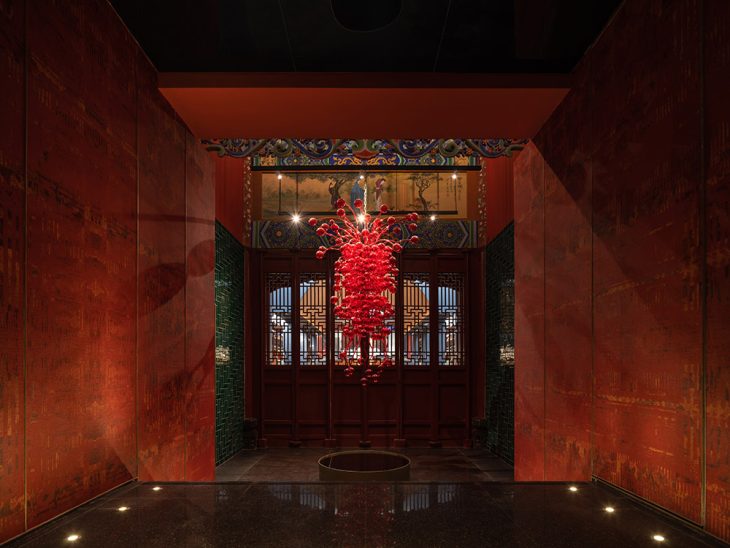
In the public area on the first floor, charm emanates from the red glazed chandelier. If red has always been an inseparable topic in Eastern culture, the sculptural chandelier must be one of those, reinterpreting the light, poetic and natural side of red. The dark green tiles and the latticework of the windows bring about a Chinese Art Deco style, bridging the fascination of traditions and intricate craftsmanship with the simplicity of the industrial era.
The brass and dark gray stone tile floors harmonize between opposite colors, and the coarseness and rusticity of the stone balances the fragility of the carvings and ornamentation. The space exudes a refined and dignified historical atmosphere, but also feels the vitality of nature.
Designer uses texture to complement the color blocks, with the warmth of lapis lazuli, brass and wood. Light is understated and introspective, bringing out the ultimate experience of bold colors, forming a new, neo-classical beauty.
The VIP room continues the neo-classical romanticism, with layered partitions and gauze, bringing the hazy beauty. The designer started with materials, colors, utensils and art to create a sense of exquisite, elegant and luxurious atmosphere for the venue. The chandelier with golden grid echoes the wall with curved lines and becomes the highlight. The designer discarded the heavy, old and rigid brass and discovered its light, flexible and classical side, thus echoing with the gauze, and the space is animated through its texture and the interweaving of countless fine grids.
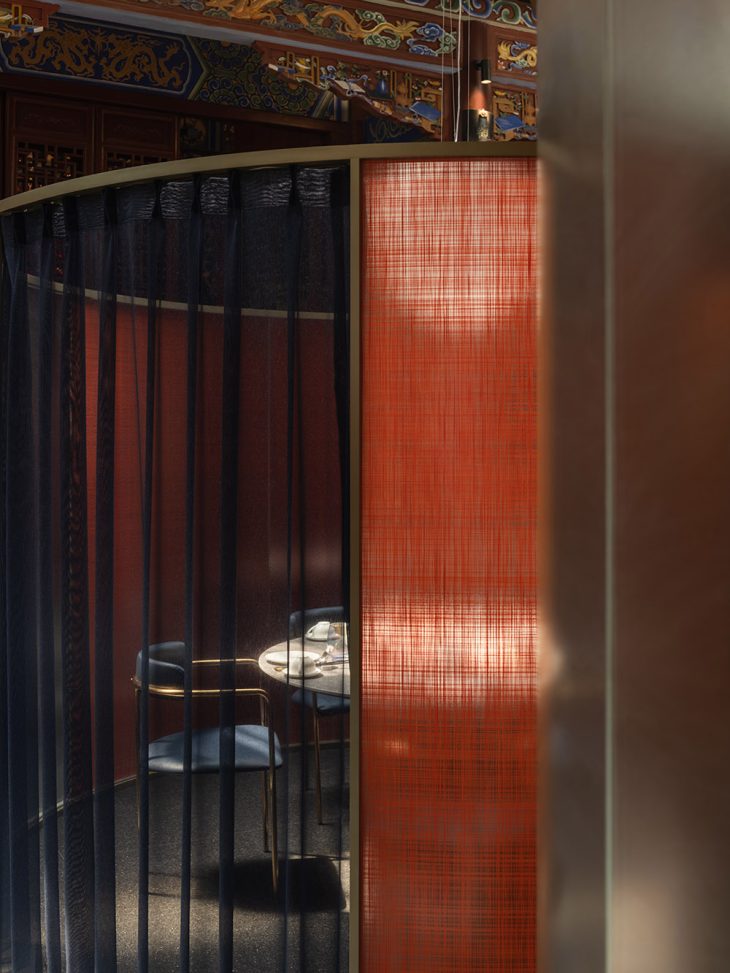
The outdoor tables is surrounded by gauze and fabric, and made of brass as structure, either round or square. Sunlight spreads on the outdoor passage and the intricate details of the eaves contrast with the large simple color blocks brought by the cloth, wandering between permeability and mysteriousness.
